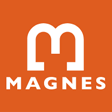Holy Land, California
In 1974, the Judah L. Magnes Museum commissioned Albert Garvey (b. 1932, Chicago), a photographer, printmaker, and graphic designerthen living in Fairfax, California, to create a portfolio of views of contemporary Israel.
This commission, unconventional for its time, resulted in the work, We Are the Wall Itself, a collection of twenty-four even more unconventional serigraphs (color silkscreen prints) based on images taken by the artist and his wife, Barbara, first in 1960 and again in the spring of 1974, shortly after the Yom Kippur War.
Drawing from more than one thousand photographs, altered in the darkroom and combined with hand-drawn stencils, Garvey depicted religious gatherings, the walls and the streets of Jerusalem, the urbanization of Eilat, agricultural work in the kibbutz, and the emerging youth counterculture.
By presenting selections from the original 1974 project, we are revisiting two sets of cultural conventions: those connected to the artistic practice of “imaging the Holy Land,” as well as the ways in which the State of Israel has commonly been portrayed since its founding in 1948.
Emblematic of the unique view of modern Israel that emerged out of California in the 1960s and early 1970s, Garvey’s work captured Israel’s diversity through the lens of Pop Art’s popular medium of screen printing. This technique, along with the subjects portrayed, created an image of Israel that was distant from the ways in which the country had been represented until then in America and elsewhere.
Rather than glorifying military might, agricultural advancements, and archeological treasures, these images offered a direct appreciation for the daily life of a developing country in which multiple cultures continually negotiated ways to coexist.
–Francesco Spagnolo, Curator
Holy Land, California (2013) Exhibition Texts
Keep Up-To-Date

